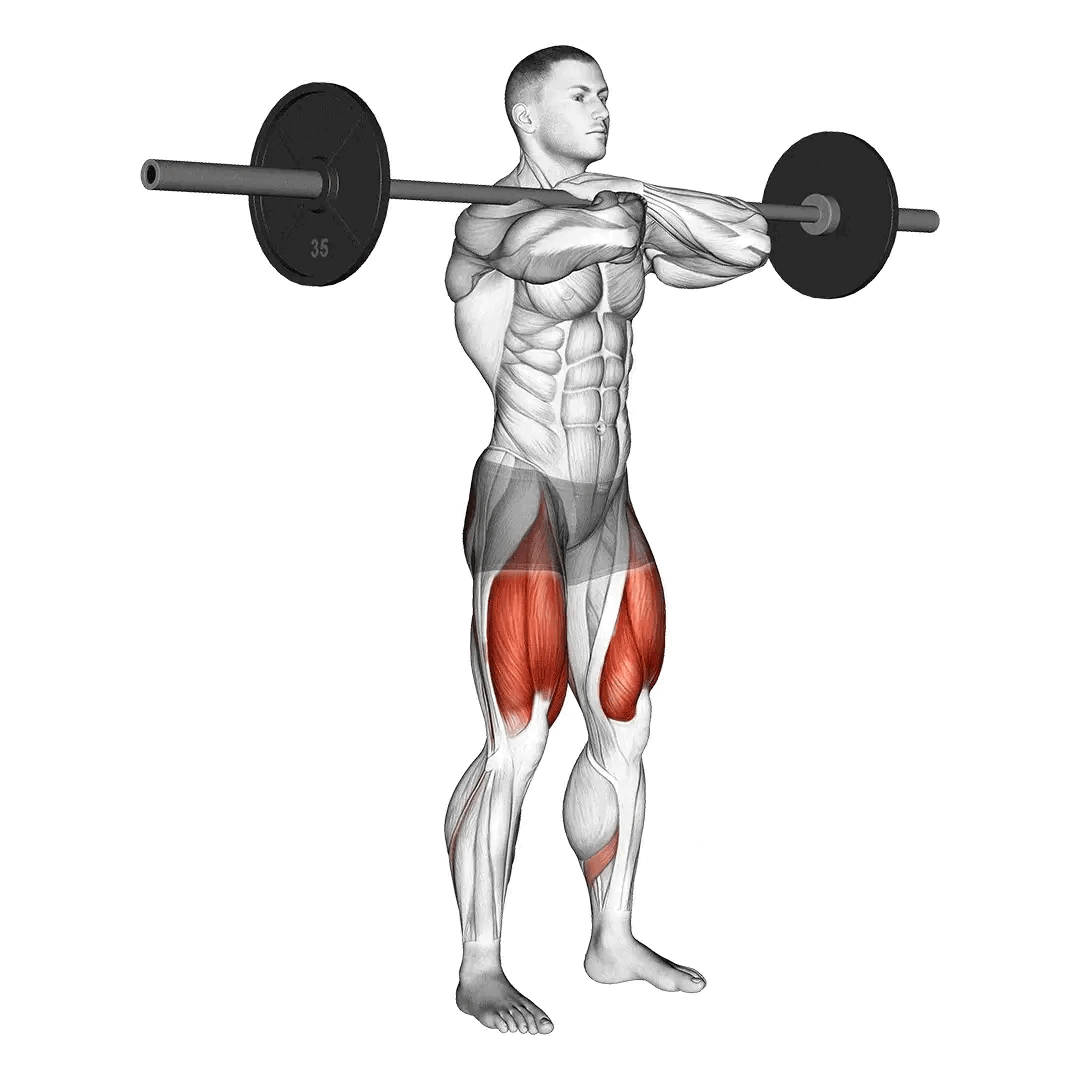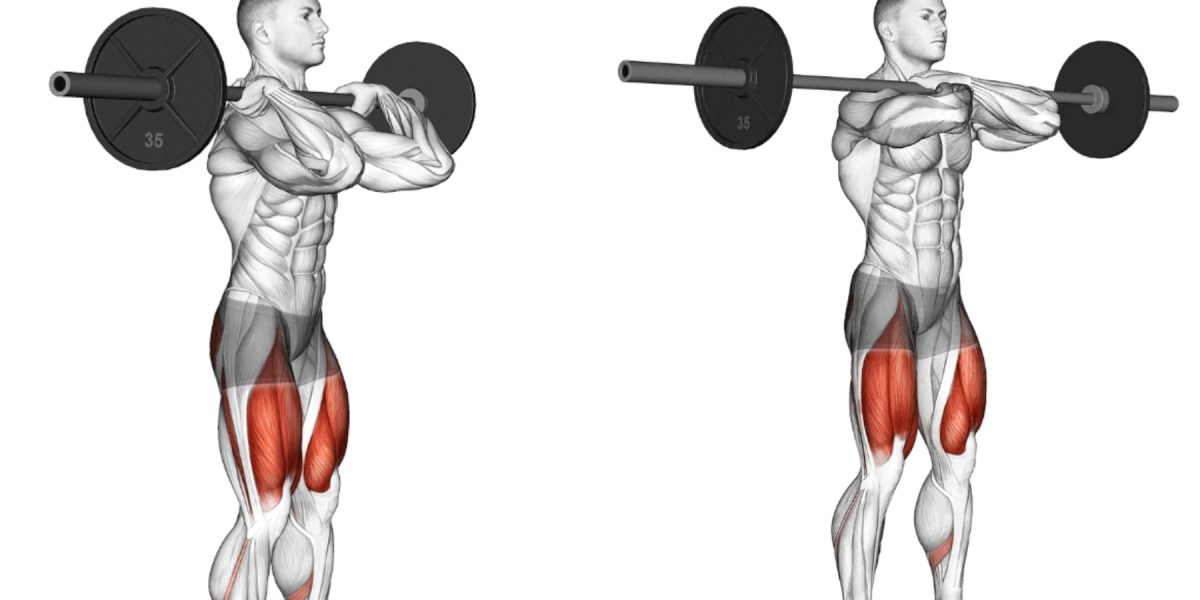When I first started messing with front squat form, I thought I had it down. But in reality? My wrists hurt, my elbows dropped, and I kept tipping forward.
I finally recorded myself at the gym—and it was a mess.
That’s when I started digging into Reddit threads and coaching cues. Turns out, there’s a lot more to proper form than just holding the bar and dropping into a squat.
If you’re in a fast-paced gym setting or coaching others, getting the form right makes a huge difference. Here’s what helped me clean it up.
How I Finally Nailed My Front Squat Form
“Chest tall, elbows high, feet grounded—and the barbell rests on your front delts, not in your hands.”
That one line fixed more mistakes than I care to admit. But for real progress, I had to break it down step by step.
Step-by-Step: Front Squat Form Breakdown

Setup
This part threw me off early on.
I used to jam the bar into my throat and wonder why I couldn’t breathe.
Here’s what works:
- Feet shoulder-width apart, maybe a little wider.
- Toes slightly turned out.
- Bar sits across your front delts—not your neck.
- Elbows high. Think “point them to the wall in front of you.”
- I started with straps to help with wrist pain (more on that later).
Descent
This is where most people fold—literally.
What helped me:
- Keep the chest up and core tight.
- Sit straight down, don’t lean forward.
- Knees out, over the toes.
- Elbows up the whole way down—drop them, and the bar’s gone.
Ascent
I used to shoot my hips up first, turning it into some weird good morning.
Now I focus on this:
- Push through mid-foot (not heels, not toes).
- Keep elbows and chest leading the way.
- Stand up with control—not speed.
- Brace before you move. Every rep.
That’s what cleaned up my front squat form fast. And in a gym setting, where you’re coaching or lifting under pressure, simple cues like these save time and avoid injury.
Extra Details That Cleaned Up My Form Fast
When I finally got serious about my front squat form, these were the small tweaks that made a big difference. I broke them into three parts: techniques, precautions, and dumb mistakes I made so you (hopefully) don’t have to.
Techniques That Actually Helped Me
- I started looking straight ahead—not up, not down. Helped me stay upright.
- Before every rep, I braced like someone was about to punch me in the gut. Big game-changer.
- I threw in some paused reps at the bottom. Helped me feel where I lost tightness.
- My stance? Slightly wider than shoulder width, toes out a bit. That’s when it clicked for me.
- Front rack grip was brutal at first, so I used lifting straps. Took all that pressure off my wrists.
- Oh, and unracking—used to yank it out. Now I stand tall, let the bar settle into my delts, step back smooth. Rerack the same way—no slamming.
Precautions Worth Calling Out
- Don’t let the bar ride your throat. If you’re choking, it’s sitting too high. Shift it back to your front delts.
- Wrist pain? Don’t power through it. I stopped and fixed my setup with straps—and it saved me.
Mistakes I Made and Fixed
- My elbows used to drop mid-rep. Every time, the bar started rolling.
- Rounded upper back = zero control. Fixing that helped my whole posture.
- I’d shoot my hips up way too fast and fold forward. Keeping elbows and chest high fixed that.
- Started with a narrow stance—kept tipping. Widened it just a bit and finally felt stable.
- Rushed the descent. Sloppy. Now I stay controlled and tight.
- Used to slam it back like I was in a rush — looked cool, felt dumb. Step in smooth, line it up, and ease it in. No need to wreck the rack.
So yeah, if there’s one thing I figured out the hard way — it’s this: you don’t need to be some lifting legend to dial in clean front squat form.
👉 You just need the right cues, solid reps, and a bit of patience.

Hi, I’m the editor here at Leadman Fitness. We’re a manufacturer focused on producing top-quality barbells, plates, kettlebells, dumbbells, and strength training gear. I’ve been into sports and fitness for years, and I know my way around all kinds of gym equipment—both from using it and helping create it.
I spend a lot of time understanding the real problems people run into in the gym—whether it’s beginners trying to pick the right gear or experienced lifters looking for something more durable. I stay in close touch with our production team and talk directly with other equipment makers, so we’re always improving based on what real lifters and coaches are looking for.
What I share comes from hands-on experience—stuff that actually helps people train better, not just in theory, but in real gyms.
